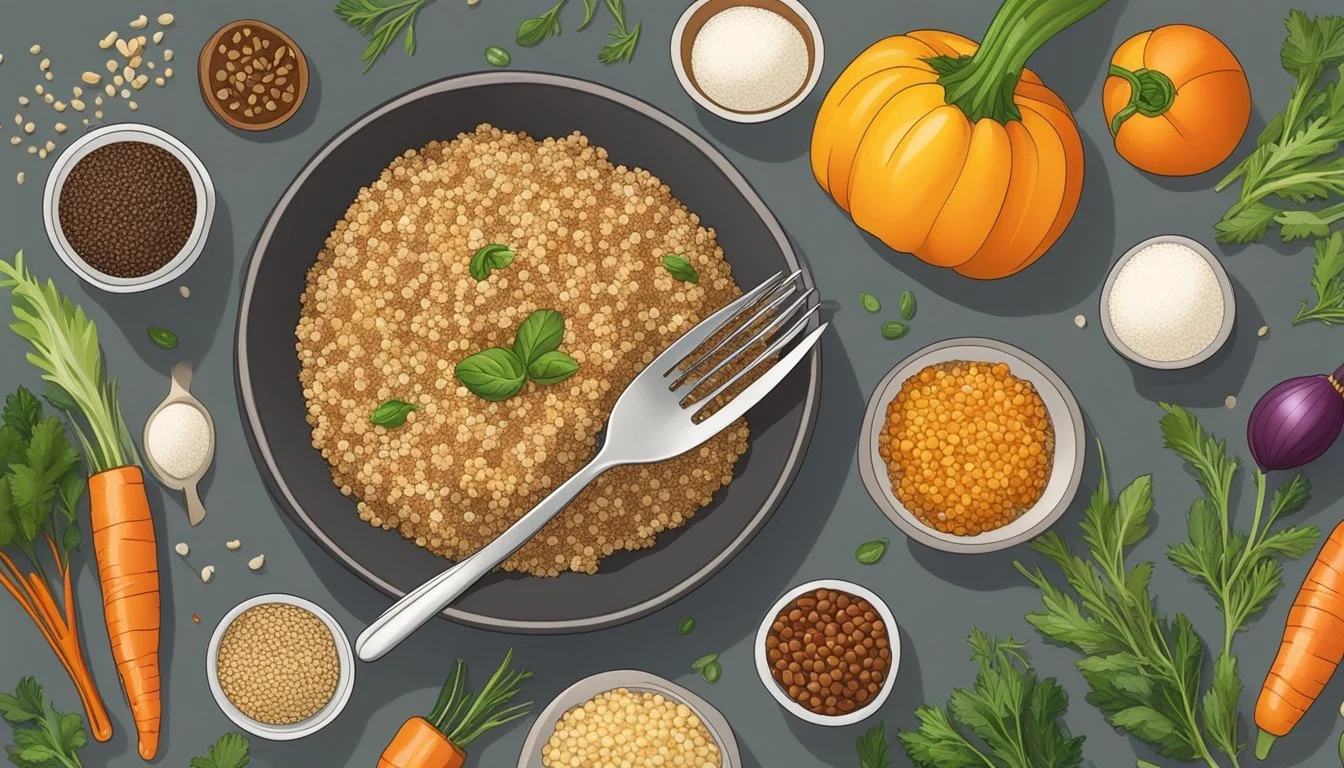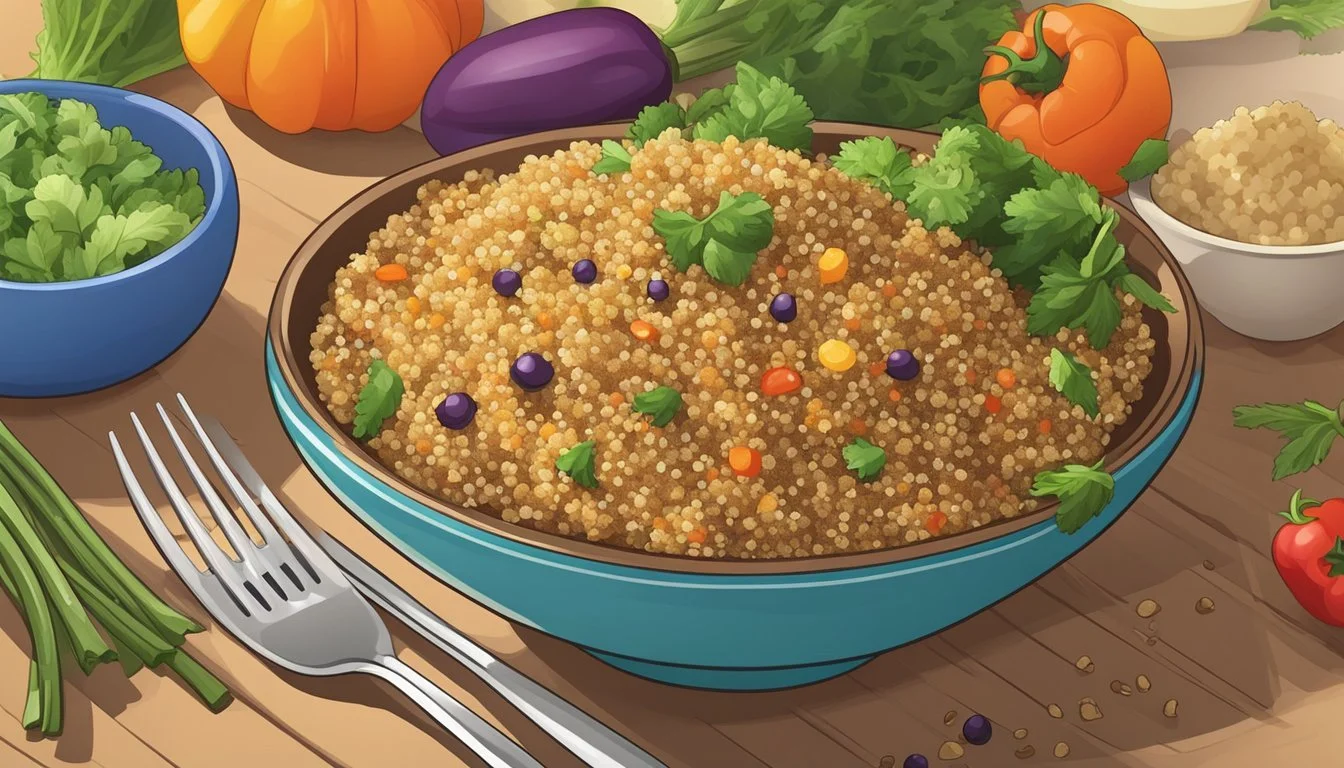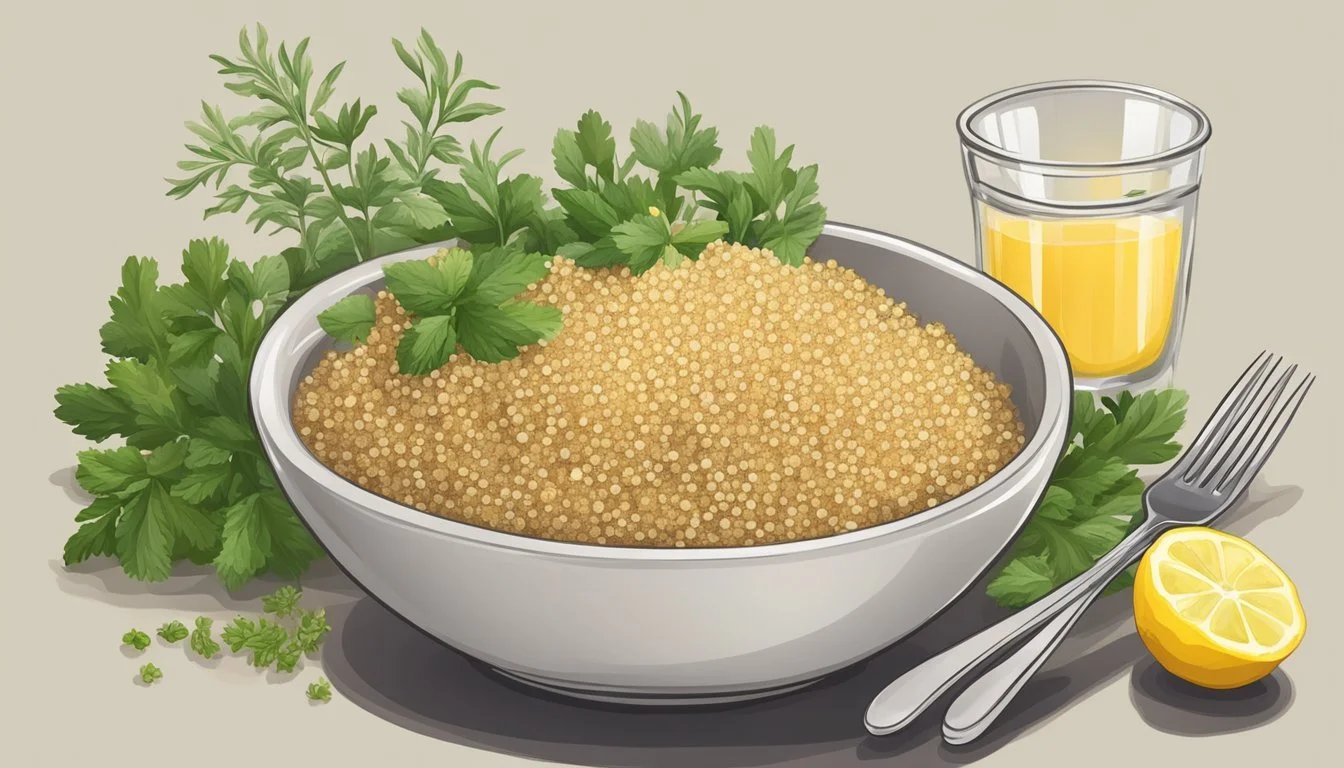How Do You Eat Quinoa?
A Simple Guide to Enjoying This Superfood
Quinoa (What wine goes well with quinoa?) is a versatile grain that has gained popularity due to its nutritional benefits and easy preparation. Recognized for its high protein content and containing all nine essential amino acids, it is a staple for those seeking a healthy diet. Not only is quinoa gluten-free, but it also offers a substantial amount of dietary fiber, antioxidants, and minerals such as magnesium and iron.
This pseudo-cereal can be consumed during any meal, fitting seamlessly into a variety of recipes. At breakfast, quinoa can be enjoyed as a warm porridge mixed with fruits and nuts. For lunch or dinner, it serves as an excellent base for salads, a wholesome addition to soups, or a nutritious alternative to rice and other grains. Its nutty flavor and fluffy texture make it a delightful accompaniment or main ingredient in a range of dishes.
Preparing quinoa is relatively straightforward. It requires rinsing to remove its natural coating, known as saponin, which can impart a bitter taste. Once rinsed, it is cooked similar to rice, with the general ratio of two parts liquid to one part quinoa until the grains become translucent and the germ separates, creating a light and fluffy texture. With these simple steps, quinoa can easily become a healthy component in one's cooking repertoire.
Understanding Quinoa
Quinoa is a nutritious seed that has become renowned for its complete protein profile and compatibility with gluten-free diets. It serves as a staple in many health-conscious individuals' meals due to its dense nutritional value and versatility.
Nutritional Profile
Quinoa is considered a superfood due to its impressive range of nutrients. A 100-gram serving of cooked quinoa (how long does cooked quinoa last?) provides approximately 120–130 calories, and notably, it is a complete protein, containing all nine essential amino acids. Specifically, it offers around 4 grams of protein and 2 grams of fiber. This grain-like seed is a good source of magnesium, iron, vitamins, and manganese. Quinoa also carries a moderate amount of calcium and folate, contributing to its position as a healthful choice. It is free from gluten, making it a safe and nutritious alternative for those with gluten sensitivities.
Nutrient Amount per 100g of Cooked Quinoa Calories 120-130 Protein 4g Fiber 2g Magnesium 64mg (16% DV) Iron 1.5mg (8% DV) Manganese 0.4mg (20% DV)
(DV = Daily Value)
Quinoa Varieties
There are several varieties of quinoa available, with white quinoa, red quinoa, and black quinoa being the most common. White quinoa, often simply referred to as quinoa, is the most widely available and cooks up fluffier than its counterparts. Red quinoa holds its shape better after cooking, making it ideal for cold salads or recipes where a firmer texture is desired. Black quinoa has an earthier taste and crunchier texture, and like the other varieties, it is considered a whole grain.
Each variety shares the same nutritional benefits but can be chosen based on personal preference, with the subtle differences in texture and flavor enriching a range of dishes across all meals. All forms of quinoa are naturally grain-free seeds, although their culinary applications are similar to that of other grains.
Preparation Basics
When preparing quinoa, one should pay attention to proper rinsing, cooking methods, and techniques to achieve a fluffy texture to ensure palatability and nutritional value.
Rinsing Quinoa
Rinsing quinoa is an essential first step before cooking to remove saponins, the bitter-tasting compounds that coat the seeds. Using a fine-mesh strainer, one should thoroughly wash the quinoa under cold running water until the water runs clear. This process will help to prevent bitterness and improve the overall taste.
Cooking Methods
To cook quinoa:
Measure the quinoa and liquid: The standard water ratio is 2 cups of water or broth for every 1 cup of quinoa.
Boil: Bring the liquid to a boil in a saucepan.
Simmer: Add the quinoa to the boiling liquid, reduce the heat to a low simmer, cover, and cook until the quinoa absorbs the liquid and becomes tender.
Alternative cooking methods: Quinoa can also be cooked in a rice cooker using the same liquid-to-quinoa ratio.
Achieving Fluffy Texture
For fluffy quinoa:
After cooking, let the quinoa sit covered for 5 minutes to allow steam to continue softening the grains.
Use a fork to gently fluff the quinoa, which separates the grains and incorporates air for a light and airy texture.
Toasting quinoa in a dry pan before adding liquid can also enhance its texture and nutty flavor, but be careful to avoid burning.
Culinary Applications
Quinoa, a versatile and nutritious grain, shines across various dishes, offering a perfect blend of texture and flavor. This section explores how to incorporate quinoa into salads, breakfast options, and other creative dishes while enhancing its natural flavors.
Quinoa in Salads
Quinoa salads offer a balance of protein, veggies, and flavor. A typical Quinoa Salad might include:
Ingredients: quinoa, mixed greens, cucumbers, cherry tomatoes, diced bell peppers
Dressing: olive oil, lemon juice, salt, and pepper
One can cook the quinoa, cool it to room temperature, then toss it with the veggies and dressing for a refreshing and nutritious meal.
Breakfast Options
Quinoa can kickstart the day as a high-protein breakfast. Breakfast Bowls and Porridge are common morning dishes:
Breakfast Bowls: Combine cooked quinoa with yogurt or milk, topped with fruits and nuts.
Breakfast Porridge: Simmer quinoa in milk or a milk alternative until creamy. Sweeten with honey or maple syrup.
As an alternative, Breakfast Cookies made with quinoa offer a handy on-the-go option, often mixed with oats, banana, and nuts.
Creative Quinoa Dishes
Beyond salads and breakfast, quinoa's adaptability extends to lunch and dinner, featuring in:
Burgers Patties: Mix quinoa with beans and seasonings to form patties.
Buddha Bowls: Layer quinoa with roasted veggies, sauce, and a protein source.
Quinoa Soup: Use as a thickening agent or for added protein.
Casseroles: Substitute rice with quinoa for a healthier twist.
Enhancing Quinoa Flavors
The secret to a delicious quinoa dish often lies in its seasoning and cooking method:
Seasoning: Use herbs, spices, and a touch of salt to enhance the natural nuttiness.
Cooking Quinoa: Simmer in vegetable broth instead of water for an extra flavor boost. Olive oil can be added after cooking for richness.
Quinoa Recipe Inspirations
When it comes to quinoa recipes, the options are as diverse as quinoa's nutritional profile. For a start, Toasted Quinoa Salad is a delightful dish. It includes crunchy maple almond clusters for a sweet and textured experience. The almonds, enhanced with maple syrup and a hint of cinnamon, complement the nuttiness of quinoa perfectly.
For those seeking warm comfort, creating Perfect Quinoa is foundational. The process involves:
Rinse quinoa under cold water to remove its natural coating, called saponin.
For every cup of quinoa, use two cups of liquid—water or broth for extra flavor.
Combine quinoa and liquid, and bring to a simmer.
Cover and cook until all liquid is absorbed (typically 15-20 minutes).
Allow it to sit covered off the heat for a few minutes. Fluff with a fork before serving.
Incorporating quinoa into breakfast is simple. Cooks can use it as a protein-packed base for porridges or granola, infusing ingredients such as fresh fruits, nuts, or honey.
Quinoa's versatility also shines in main courses. One can replace rice in stir-fries or serve it alongside robust, spicy foods (What wine goes well with spicy food?) to balance the meal's flavors. Additionally, stuffed peppers or tomatoes with a quinoa and vegetable mix make for a fulfilling dinner option.
Lastly, quinoa can also be baked into goods. For a healthy twist, it can be integrated into muffins or bread, adding fiber and protein to baked treats.
Health Considerations
When incorporating quinoa into a diet, understanding its health implications is crucial. Quinoa is a gluten-free grain, making it a fitting choice for those with celiac disease or gluten sensitivities. Being naturally free from gluten, quinoa offers a safe alternative to wheat, barley, and rye for those who must avoid these grains.
As a vegan and vegetarian staple, quinoa provides an excellent source of plant-based protein. This makes it a key food item for individuals following these diets, as it contains all nine essential amino acids, which is rare for plant-based foods. Furthermore, for those adopting a plant-based lifestyle, quinoa is a versatile ingredient that can enhance the nutritional profile of meals.
Quinoa comes with an array of health benefits. It's not only a source of protein but also rich in fiber, which aids in digestion and may contribute to cardiovascular health. Below is a breakdown of its nutritional content per serving.
Nutrient Per 1 Cup Cooked Percentage of Daily Value* Protein 8 grams — Fiber 5.2 grams 20% Iron — — Magnesium — — Phosphorus — 22%
*Percentages are based on a 2000 calorie diet.
Individuals should note that while quinoa is relatively low in calories, it is relatively high in carbs compared to other proteins. As such, portion control is advised, especially for those monitoring their carbohydrate intake. When preparing quinoa, rinsing it thoroughly can remove the natural coating called saponin, which can impart a bitter taste. This simple step assures a palatable flavor, ensuring an enjoyable eating experience.
Pro Tips and Techniques
When cooking quinoa, one should consider the following techniques to ensure a perfect dish:
Equipment: Utilizing a fine mesh strainer is essential for rinsing quinoa before cooking, as it removes the natural coating called saponin, which can impart a bitter taste. For the cooking process, a saucepan with a tight-fitting lid helps in maintaining the right temperature and moisture levels.
Rinsing: Always rinse quinoa under cold water to eliminate any residue or bitterness. This can be efficiently done using the fine mesh strainer.
Cooking Ratio Cooking Time 1 part quinoa 12-15 minutes 2 parts water Simmer on low
Cooking: For one part quinoa, use two parts water. Bring the mixture to a boil, then cover and simmer. It should take roughly 12-15 minutes for the grains to absorb all the water. To check for doneness, look for tiny spirals (the germ) separating from and curling around the quinoa seeds.
Fluffing: After cooking, let the quinoa sit covered for 5 minutes and then fluff it with a fork to separate the grains and release excess steam, which prevents the quinoa from becoming mushy.
Storage: Cooked quinoa stores well in the refrigerator for up to a week. Ensure it's cooled down before sealing it in a container to maintain freshness.
Meal Prep: Quinoa is a versatile grain that can be prepared in large batches at the start of the week. Use it as a base for salads, as a side, or incorporate it into various recipes like stews and patties.
By following these methods, they can consistently achieve light, fluffy, and flavorful quinoa that enhances the overall quality of their meals.
Storage and Food Safety
When it comes to storing quinoa, maintaining its freshness and ensuring its safety for consumption are paramount. Uncooked quinoa has a relatively long shelf-life and can last for 2-3 years if kept in a cool, dry place away from sunlight. Upon opening, transferring quinoa to an airtight container is crucial in extending its usability.
In the fridge, cooked quinoa should be stored in a sealed container and used within 3-5 days. It’s vital to let the quinoa cool down before refrigerating to prevent moisture buildup which can lead to bacterial growth.
For freezer storage:
Transfer the cooled quinoa to airtight containers or freezer bags.
If using bags, squeeze out the excess air.
Label the container with the date of freezing.
Quinoa can be kept in the freezer for 8-12 months, ensuring it retains its quality. It is edible beyond this point, but it may be susceptible to freezer burn and textural changes.
To thaw frozen quinoa, one should place the container in the fridge overnight. If in a hurry, quinoa can be reheated directly from the freezer by microwaving it.
Storage Location Condition Shelf-life Pantry Unopened, dry, cool Up to 3 years Fridge Cooked, sealed 3-5 days Freezer Cooked, airtight 8-12 months
Regardless of storage method, one should always inspect quinoa for signs of spoilage, such as mold, unpleasant odor, or an off-taste, before consumption. Food safety is essential, and following these storage guidelines will help ensure that quinoa remains a healthy and safe addition to one's diet.






